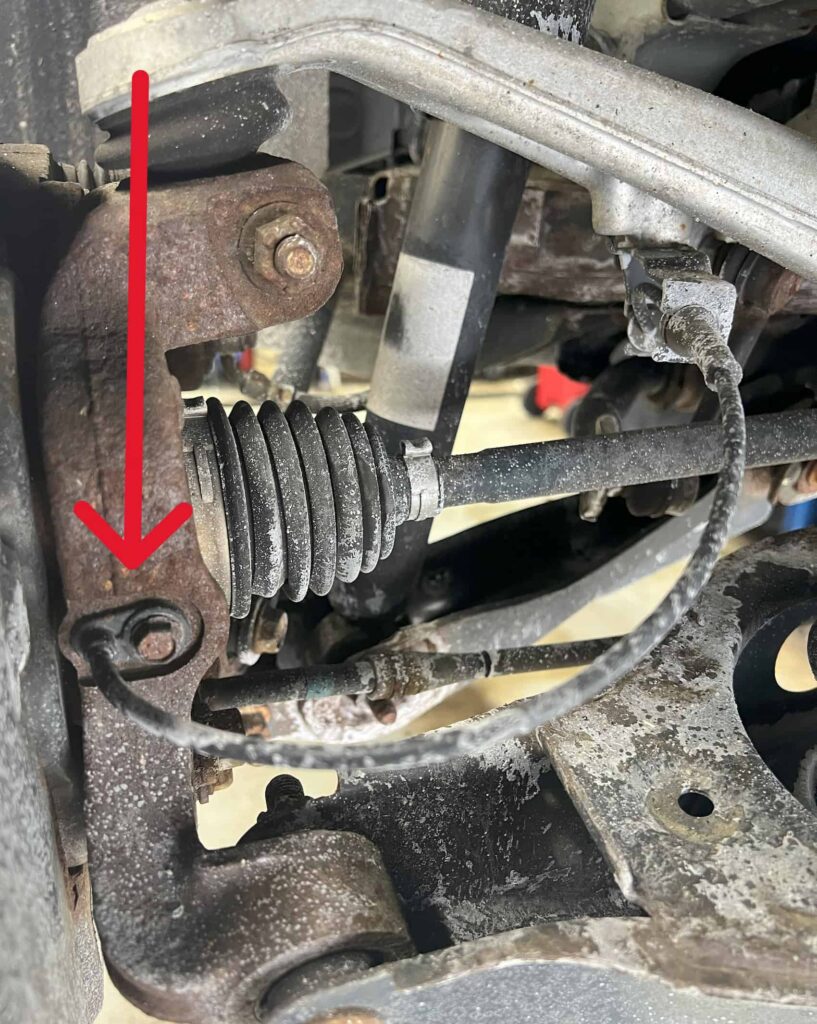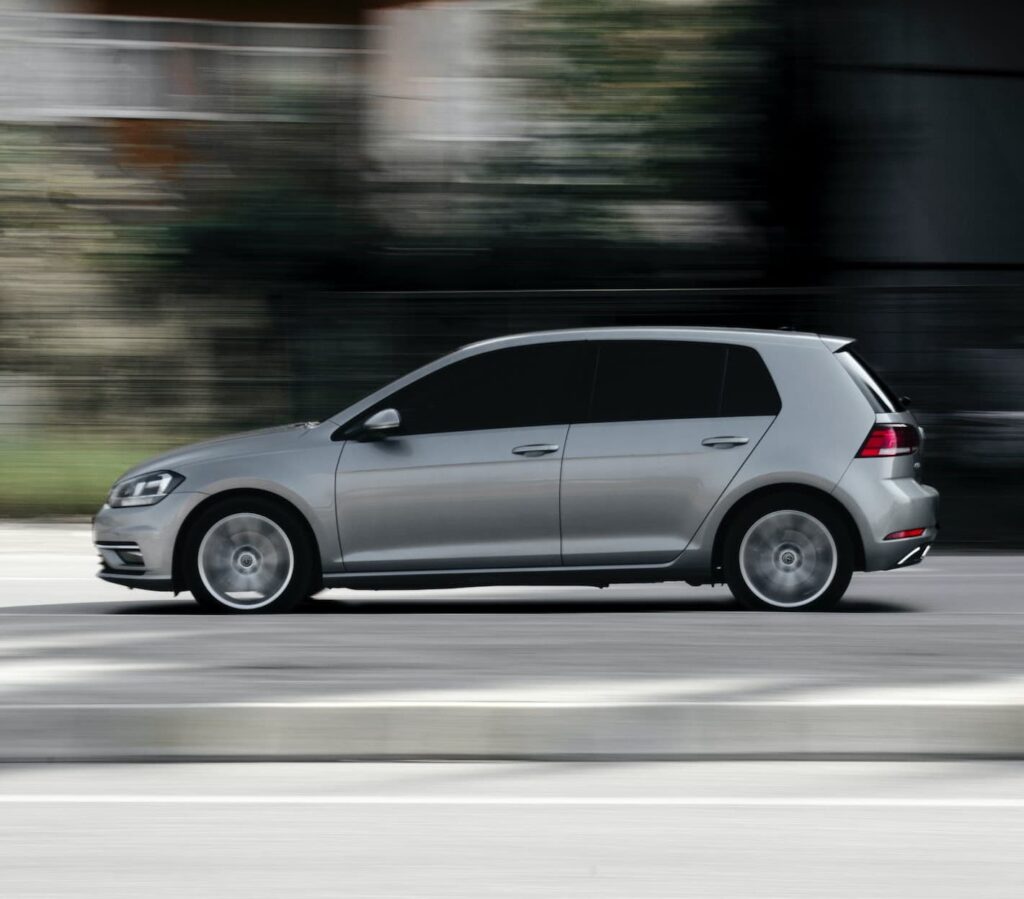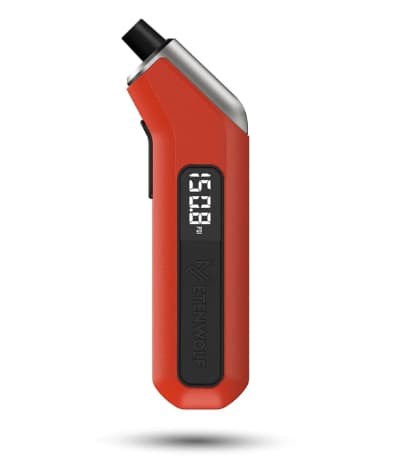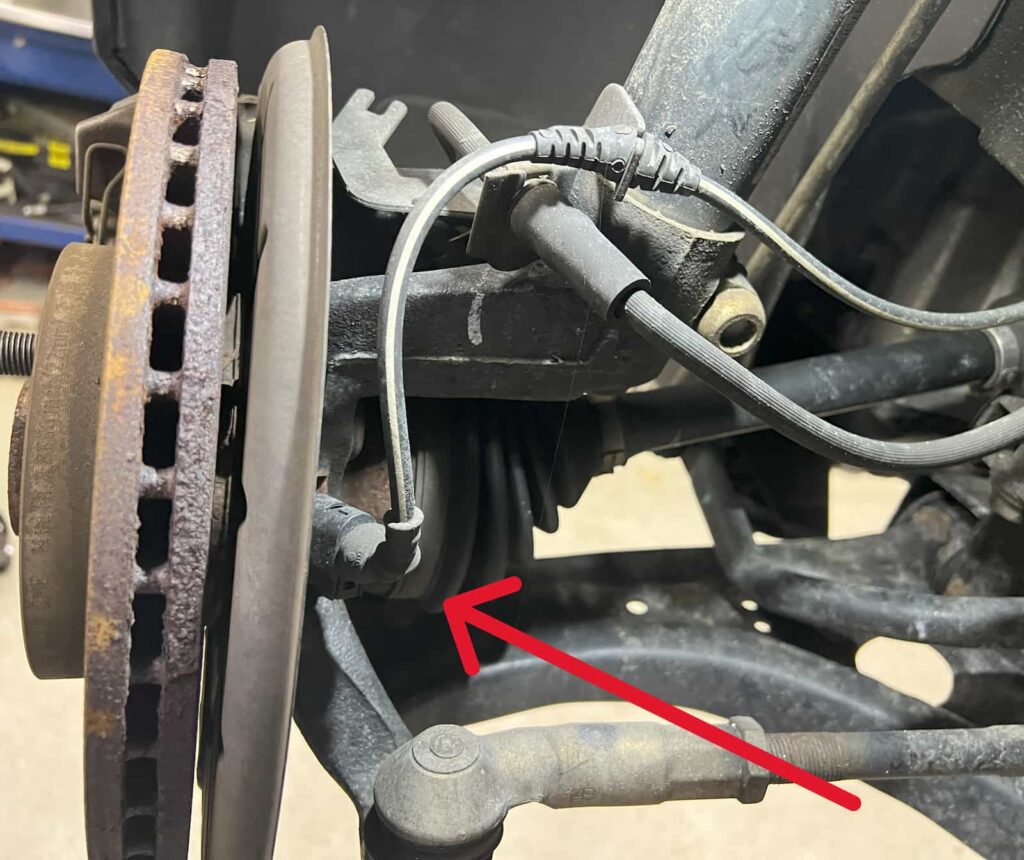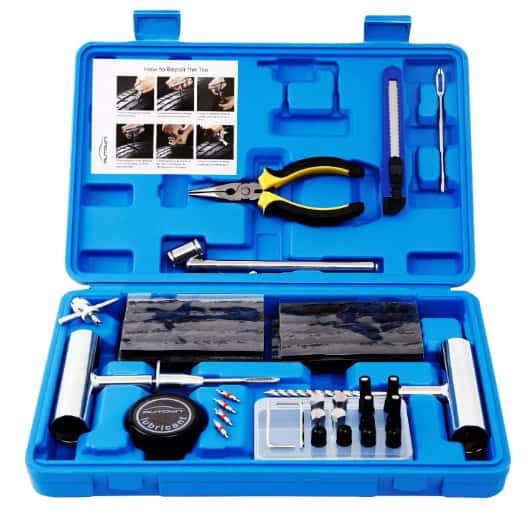STEPS TO RESET VOLKSWAGEN GOLF TIRE PRESSURE MONITORING SYSTEM
VW GOLF 2019-2025 (MK8)
Adjust all 4 tires air pressures to the recommended values before proceeding.
Start the VW Golf engine or put the ignition into Run mode by pressing the start/stop button twice without your foot on the brake pedal.
Press the CAR button on the information display’s touch screen.
Select SETTINGS on the bottom right corner of the information display screen.
Select TIRES.
Select SET.
A message will appear “Do all four tire pressures match the required values?”
Select CONFIRM.
A confirmation message will read “Tire pressures have been saved”.
MK8
VW GOLF GTI (2021-2025)
Inflate or adjust all 4 tires to the recommended air pressures.
Start the engine.
Select VEHICLE on the touch screen information display.
Select TIRE PRESSURE.
Select SET.
A message will appear “The current tire pressures match the required values”.
Select OK.
A confirmation message will appear “Tire pressures have been saved”.
VW GTI
VW GOLF 2012-2019 (MK7)
Fill all 4 tires to the recommended tire pressure.
Start the engine of the VW Golf or put the ignition into Run mode by turning the key to the second position in the ignition without your foot on the brake pedal.
Press the MENU button on the right side of the steering wheel. (On the right of the OK button)
Press the MENU button until the information display screen until you reach SETTINGS.
Use the DOWN arrow on the right side of the steering wheel to scroll down until TIRE PRESSURE is highlighted.
Select TIRE PRESSURE with the OK button on the steering wheel.
A message on the information display will read “When all tire pressures have been checked please store”. Select STORE by pressing the OK button.
Another message will read “Do all 4 tire pressures match the required values?”. Select CONFIRM.
A confirmation message will read “Tire pressures stored”.
MK7
VW GOLF 2008-2012 (MK6)
Fill the tires to the recommended pressures.
Open the glove box.
Hold down the tire pressure button
Once you hear the vehicle make a “ding” or “chime” sound, release the tire pressure button.
Drive your Volkswagen golf!
MK6
WHAT IS TPMS?
Volkswagen Golf’s Tire Pressure Monitoring System (TPMS) operates on an indirect approach. It assesses tire pressure by analyzing information from its wheel speed sensors, rather than using separate pressure sensors in each tire, which is the norm in direct monitoring systems.
HOW DOES THE VW GOLF TPMS WORK?
WHEEL SPEED SENSORS
The Volkswagen Golf is equipped with wheel speed sensors that track and relay the rotational velocity of each wheel to the car’s central computer. This data is crucial for the functioning of systems such as ABS and the TPMS. Positioned either behind or within the wheel hub, these sensors are designed to continuously monitor the speed of each wheel.
HOW DO WHEEL SPEED SENSORS WORK?
In the Volkswagen Golf, wheel speed sensors function through the interaction of magnetic fields with a toothed sensor ring. This setup enables them to measure and communicate each wheel’s rotational speed to the vehicle’s electronic control unit (ECU). As the wheel turns, these sensors produce electrical signals whose frequency changes in accordance with the wheel’s speed. The ECU then decodes these signals to ascertain the wheel’s rotational rate, a critical factor for maintaining vehicle stability (via traction control), ensuring effective braking (through anti-lock brakes), and monitoring tire pressure accurately.
ANALYZING DIFFERENCES OF WHEEL ROTATIONS
The indirect TPMS in operation relies on the understanding that a tire with decreased air pressure will possess a marginally smaller diameter, leading to a higher rotation speed compared to other tires. Utilizing wheel speed sensors, this system measures and contrasts the rotational velocities of all four tires. Consequently, the tire pressure system in the Volkswagen Golf accurately gauges the pressure in each tire only when the vehicle is in motion.
MEASURING PRESSURE DIFFERENCES
The tire pressure monitoring system in the Volkswagen Golf assesses the information gathered from the wheel speed sensors. It identifies instances when one wheel consistently spins faster than the rest, which may signal a decrease in air pressure in that particular tire.
NOTIFYING THE DRIVER
When there’s a noticeable discrepancy in the rotation speeds of the wheels, indicative of reduced tire pressure, the system activates a warning light on the dashboard. In such cases, the Volkswagen Golf displays a “low tire pressure” alert on the information display, an audible “beep” and by the conventional tire pressure warning symbol (a yellow exclamation point) on the dashboard.
FACTORS THAT CAN CAUSE THE TIRE CIRCUMFERENCE TO CHANGE
Anytime a tire’s circumference changes, this can potentially trigger the VW Golf low tire pressure alert.
Tire Pressure Changes:
Inflation: Over-inflating a tire can cause slight expansion, increasing its circumference.
Deflation: Under-inflated tires have a smaller circumference due to decreased air pressure causing the tire to flatten.
Wear and Tear:
Tread Wear: As the tread on a tire wears down over time, the diameter of the tire decreases, leading to a reduced circumference.
Uneven Wear: Uneven wear on the tire, often due to alignment issues, can cause the circumference to change unevenly around the tire.
Temperature Fluctuations:
Heat: Higher temperatures can cause the air inside the tire to expand, slightly increasing the tire’s circumference.
Cold: In colder conditions, the air inside the tire contracts, reducing the tire’s circumference.
Load Changes:
Increased Load: More weight on the tire can compress it, slightly decreasing the circumference.
Decreased Load: Less weight allows the tire to retain its optimal shape, possibly affecting the circumference.
Tire Damage:
Bulges and Blisters: Damage to the tire’s sidewall can lead to bulges or bubbles, altering its shape and circumference.
Punctures and Repairs: Repairs like tire patches can slightly alter the shape of the tire, affecting its circumference.
Type and Quality of Tire:
Different Materials: Tires made from different materials may expand or contract differently under the same conditions.
Manufacturing Variations: Slight variations in manufacturing can result in differences in tire circumference, even among tires of the same model.
Snow Chains: installing snow chains on tires will increase the overall shape of the tire.
Aging of the Tire:
Rubber Deterioration: Over time, the rubber compounds in a tire can degrade, potentially changing its flexibility and circumference.
Structural Breakdown: Internal components of the tire, like steel belts, can break down over time, affecting the tire’s overall shape and size.
Installation Factors:
Improper Mounting: If a tire is not mounted correctly on the rim, it can lead to an irregular shape and altered circumference.
Wheel Size Mismatch: Using a tire on a rim size it’s not designed for can significantly change its circumference.
WHEN IS IT NECESSARY TO RESET THE TPMS?
Once any tire’s air pressure has been adjusted.
If a tire or wheel has undergone servicing or repair.
After the tires have been rotated.
When a tire or wheel has been detached and then refitted on the Volkswagen Golf.
In cases where the spare tire has been mounted.
WHAT IS THE PURPOSE OF CALIBRATING AND RESETTING THE TPMS?
Resetting the TPMS in the Volkswagen Golf, which involves calibrating or storing new tire pressures, establishes a new reference point for the tire air pressure. It’s crucial to adjust the tire pressure to the recommended levels when the tires are cool before logging these updated pressure values.
WHY IS THE TIRE PRESSURE LIGHT ACTIVE WITHOUT TIRE PROBLEMS?
A frequent cause for the activation of the tire warning light in the VW Golf, despite the tires at the correct air pressure levels and appearing to be in fine condition, is the utilization of different brands or sizes of tires. The indirect TPMS in the vehicle is finely tuned to detect minor differences in tire size or brand, triggering the low tire pressure alert. It’s essential to use tires that are uniform in size, brand, make, and model on all four wheels.
THE RISKS OF TIRE UNDERINFLATION
Insufficient tire pressure can lead to overheating of the tires, raising the chances of tread detachment and unexpected blowouts. Tires that are not adequately inflated undergo excessive bending and flexing in the sidewall area, which amplifies the risk of overheating and abrupt tire failure.
LOCATING THE TIRE WITH LOW PRESSURE ON A VW GOLF
The display screen in the Volkswagen Golf indicates the exact wheel that is experiencing low air pressure. For the VW Golf’s TPMS to function correctly and accurately, the vehicle needs to be in motion. It’s advisable to use a digital air pressure gauge to verify that the air pressure in each tire aligns with the readings shown on the display screen. If there’s a discrepancy, proceed with the reset procedure.
CAN YOU DRIVE WHILE THE TIRE PRESSURE INDICATOR IS ON?
It’s advised against driving your Volkswagen Golf when the low tire pressure warning light is on. If the TPMS warning light activates, you should safely stop and manually check the air pressure of each tire using a digital tire pressure gauge. Also, it’s important to conduct a visual inspection of the tires and wheels for any irregularities, such as a screw embedded in the tire.
HOW LONG CAN YOU DRIVE WITH THE TIRE PRESSURE LIGHT ON?
There’s no specific safe duration or distance that can be recommended for driving with the low tire pressure light activated. Before deciding to continue driving, it’s important to first identify the cause of the low tire pressure alert.
VOLKSWAGEN GOLF TIRE SIZE AND AIR PRESSURE
TIRE SIZE | Front Psi/kPa | Rear Psi/kPa |
205/55R16 | 32/220 | 32/220 |
195/65R15 | 32/220 | 32/220 |
225/45R17 | 32/220 | 32/220 |
WHAT CAUSES TIRE PRESSURE TO INCREASE WHILE DRIVING?
Tire pressure naturally rises with heat accumulation. When you drive your VW Golf for about 30 minutes at speeds over 45 mph, the tire pressure can go up by 2-4 psi. This increase is due to the heat produced by friction and the flexing of the tires. Therefore, checking the tire air pressure immediately after driving will not yield accurate results.
CAN OVERINFLATION TRIGGER THE TIRE PRESSURE WARNING LIGHT?
Should the tires of your VW Golf become overinflated, the vehicle’s display screen will alert you but the low tire pressure light will not turn on. In such instances, it’s recommended to stop driving and manually verify the air pressure in each tire.
TROUBLESHOOTING THE VOLKSWAGEN TPMS
USING SOAP AND WATER TO PINPOINT WHERE A TIRE IS LEAKING FROM
To locate a leak in a deflating tire, adhere to the following procedure:
First, inflate the affected tire of your Volkswagen Golf to at least 40 Psi.
Prepare a solution of water and dish soap in a spray bottle.
Generously spray this soapy water over the entire tire, ensuring to cover the tire bead and valve stem areas.
Watch for the formation of bubbles and track them to their source to identify the leaks location.
STEPS TO TAKE WHEN THE TIRE PRESSURE LIGHT STAYS ON DESPITE CORRECT AIR PRESSURE
Should the low tire pressure light remain on after you’ve reset the TPMS and verified that all tires are inflated to their suggested levels, follow these instructions:
Increase the pressure in each tire by 8-10 Psi more than what’s recommended.
Drive for about 5-10 minutes.
Then, let out the surplus air from each tire until they are at the proper pressure levels.
Drive again for another 5-10 minutes.
Finally, go through the TPMS calibration process.
CONSEQUENCES OF A DAMAGED OR MALFUNCTIONING WHEEL SPEED SENSOR
A malfunctioning wheel speed sensor can impair the effectiveness of the tire pressure monitoring system. This issue can lead to the activation of the low tire pressure fault indicator and result in the TPMS providing incorrect air pressure readings on the vehicle’s information display.
HOW TO RECALIBRATE YOUR VW GOLF'S TPMS FOR NEW TIRE OR WHEELS
If you equip your Volkswagen Golf with winter tires or an alternate set of wheels and tires, make sure to update this in your vehicle’s information system by recalibrating or saving the new setup in the TPMS. Failure to do so could lead to the activation of the low tire pressure indicator in your vehicle.
COLD WEATHER'S IMPACT ON YOUR VOLKSWAGEN GOLF'S TIRE PRESSURE
Have you observed that your low tire pressure light often illuminates during colder weather? This happens because tire air pressure fluctuates by approximately 1 Psi (6.8 kPa) with every 10°F change in temperature. For example, in your Volkswagen Golf, a temperature decrease of 42°F over 6 weeks could lead to a drop in tire pressure from 31 Psi to 27 Psi, which would activate the tire pressure warning light.
FAQ
CAN THE VW GOLF TPMS BE DISABLED?
The VW Golf tire pressure monitoring system cannot be disabled.
WHAT IS THE IMPACT OF ALTITUDE CHANGES ON TIRE PRESSURE?
Driving to a higher altitude doesn’t usually cause the tire pressure light in your Volkswagen Golf to turn on. When you ascend to higher elevations, the pressure inside the tires generally goes up. The expected increase in tire pressure is around 0.5 Psi for every 1,000 feet of elevation gain.
IS CORRECT TIRE PRESSURE IMPORTANT FOR FUEL EFFICIENCY?
Maintaining proper tire pressure in your VW Golf is critical for achieving the best fuel efficiency. Tires that are underinflated have a higher rolling resistance, forcing the engine to exert more effort and consequently consume more fuel. A reduction of just 1 Psi across all four tires can decrease fuel efficiency by roughly 0.2%. To put this in perspective, for a car such as the Volkswagen Golf, which typically achieves 29-39 Mpg, a 1% decrease in fuel efficiency translates to increased fuel consumption – roughly an additional gallon for every 3,000 miles driven.
WHEN SHOULD YOU USE TIRE PLUGS?
Having worked as a car mechanic for a decade, I frequently rely on tire plugs to fix punctures. When properly applied, tire plugs can serve as a durable repair, potentially lasting for the remainder of the tire’s life. Nonetheless, it’s crucial not to use tire plugs on tires with excessively worn treads or on the sidewall area. For more substantial punctures or leaks, choosing a tire patch or replacing the tire altogether is a more suitable choice.
ABOUT THE AUTHOR
STEFAN A.
Professional Automotive Technician – I am currently an automotive technician in New Jersey and have worked in private shops as well as dealerships for the past 10 years. When I am not writing articles I am wrenching on race cars and driving radio controlled cars at the track!
Everything in this article is applicable to all Volkswagen Golf models and versions built between 2008-2025.
Please note that this blog post contains Amazon affiliate links. This means that if you make a purchase through one of these links, we at TPMSRESET.COM may earn a small commission at no extra cost to you. We only recommend products that we personally use and believe in. Thank you for supporting us.

